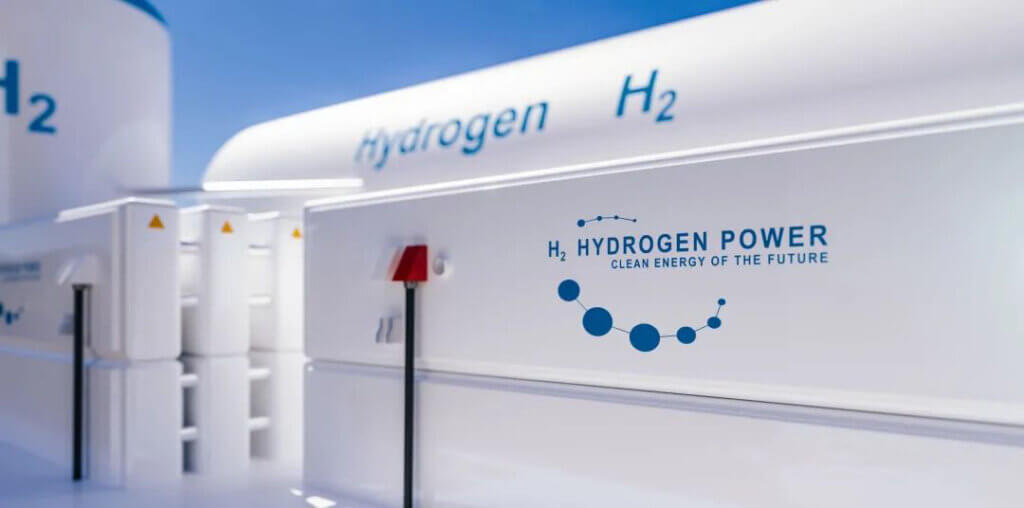“Making renewable hydrogen competitive, is arguably the best possible outcome of our future cooperation. “
Interview with dena expert Kilian Crone on the Implementation of the German National Hydrogen Strategy
Q1: Why is hydrogen important for the energy transition and why has it come into focus of policy-makers over the last years?
Hydrogen is a key component of a fully climate-neutral energy system, along with expansion of a renewable energy and electrification. Without hydrogen, it would be difficult to reach net-zero emissions: some forms of transport, for example, aviation, shipping, and heavy-duty transport, cannot be electrified, and several industrial process cannot use electricity directly and need hydrogen as feedstock or for high temperature applications.
Energy efficiency and renewable electricity are the preconditions for the transformation. Since renewable energy already provides the majority of German electricity, and Germany has made progress in the electrification of transport and industry, renewable hydrogen is the next logical step for achieving carbon neutrality. Given these conditions, renewable hydrogen offers a further way to transport, store, and trade renewable electricity; it makes local potential accessible globally.
Q2: The implementation of the German National Hydrogen Strategy is just starting. What are the next steps and how does the German government want to start a hydrogen economy?
Germany plans to create the regulatory conditions for a market ramp-up of hydrogen technologies, i.e. enable domestic markets for the production, use and transport of hydrogen. The focus is on those sectors that are already close to economic viability or that cannot be decarbonized in any other way such as the industrial and transport sectors mentioned above.
To secure and shape the future national supply of hydrogen from renewable energies and its downstream products, the German Hydrogen Strategy envisages 5 GW of electrolyser capacity by 2030 and 10 GW by 2040 in Germany. In addition to domestic production potential, it is necessary to find reliable international partners – with a focus on the EU – for the production and transport of hydrogen and establishing appropriate cooperation and import structures. Transitionally, a European market for carbon-neutral hydrogen will be established, which will accelerate the market ramp-up of hydrogen technologies on the application side.
Low-carbon hydrogen will be used wherever conversion to electrified processes is not feasible. This applies to certain hard-to-abate industrial sectors as well as to some transportation and heating applications. Demand for hydrogen for industrial processes is already substantial in Germany and amounts to about 55 TWh, which is currently served by hydrogen produced using methane steam reforming. Additionally, if steel production uses hydrogen for direct reduction, demand in Germany would grow by a further 80 TWh by 2050. Demand will continue to increase due to new applications, such as in heavy-duty transport, aviation, and shipping. Germany already has the second highest number of H2 refuelling stations in the world, the introduction of a PtL quota is currently being negotiated, and the first hydrogen trains are already running on several routes.
Q3: Which sectors are the focus of the Hydrogen Strategy? Where do you see the biggest potential for the use of hydrogen to tackle climate change?
The German Hydrogen Strategy envisages a wide range of possible applications for low-carbon hydrogen. The focus is on use in the area of sector coupling and transformation of industry, but the German government also supports future areas of application in transport as an alternative to battery-powered vehicles in heavy goods transport on the road and by rail. Finally, it may become useful in the German heating market, for example to convert existing heating systems in private residential buildings from natural gas to fuel cell technology, as a developed natural gas network, which can be repurposed, already exists.
At dena we see the biggest potential for renewable hydrogen in the industry, other hard to decarbonise sectors like aviation and maritime transport, and as feedstock for chemical processes. In these cases, there is no alternative to the use of hydrogen.
Q4: Low-carbon hydrogen will likely be traded internationally. How can this market be developed, and what rules are currently considered with respect to certification?
For international trade to emerge, it must be both: desirable and feasible. Trading hydrogen will become attractive when trading costs are low and infrastructure in place, when there is a common understanding of what defines its low-carbon property, and production cost differentials are sufficiently high. A worldwide market will then drive down prices, and allow broader use of hydrogen, whether made from renewables or based on fossil fuels.
A precondition for a functioning market is a common standard, documentation and certification of the low-carbon property of hydrogen. Such a standard is necessary as a benchmark for producers and buyers. On the one hand, it enables hydrogen as a functioning commodity market in the long run. On the other, it ensures sustainability. There have to be reliable ways of ensuring that traded hydrogen is indeed produced in a sustainable manner. This includes the greenhouse gas emission impact, but also other environmental and social issues, such as water use for electrolysis in places of water scarcity. A certification scheme for hydrogen that takes these issues into account and which will offer guidelines on which hydrogen production technology will count as low carbon, is currently being developed among others by the European Union. This will have a signal effect globally.
Q5: The Hydrogen Strategy considers renewable hydrogen to be the most sustainable in the long term. What measures are Germany and the EU taking to support the competitiveness of renewable hydrogen?
Main drivers for the prices of renewable hydrogen are the investment costs for electrolysers as well as renewable power plants. Prices for both are expected to continue to decrease significantly with economies of scale, resulting in long-term price projections for hydrogen of 2 €/kg and below at locations with excellent wind and solar conditions. While cost parity with fossil fuels can remain challenging even then, price parity for the buyer is within reach when combined with ambitious carbon prices.
Regulatory measures are important to boost demand for renewable hydrogen: Carbon prices and emission-reduction targets make the use of renewable hydrogen more and more attractive relative to emission-intensive processes. The EU Commission plans an active role of the private sector to promote the market ramp-up through an increasing demand for low-carbon hydrogen. The eligibility of renewable fuels of non-biological origin for the emission reduction targets under the Renewable Energy Directive II creates active incentives for increased demand. In Germany, a quota for power-to-liquid products in the aviation sector is also currently discussed. Furthermore, even measures such as the planned carbon border adjustment mechanism or changed rules in the emissions trading scheme will further increase demand for climate-neutral energy carriers.
Q6: What are the implications of German experiences for the planned Chinese Hydro-gen Strategy and how can the two countries work together, for example on standards to ensure that hydrogen from renewable sources can be traded and invested in freely?
China has set itself ambitious climate targets and will, in addition to an expansion of renewable electricity generation and electrification, need large quantities of renewable or low carbon hydrogen to decarbonise its industrial processes and the hard to electrify sectors. Just as in the European and German case, the development of a carbon neutral hydrogen economy will be essential.
A Chinese Hydrogen Strategy could help ramp up the global hydrogen economy and encourage entry of more corporate and R&D stakeholders to drive the technology forward. The German and European hydrogen strategies are themselves still very new, so it is too early to draw conclusions. Nevertheless, it is already apparent today that the momentum for hydrogen has increased with the implementation of regulatory measures.
Both China and Germany will benefit from working together on establishing a renewable hydrogen economy and by learning from each other, because challenges are quite similar in both countries. China has a much bigger potential for renewable energy production, but making carbon-neutral, ideally renewable hydrogen available in sufficient quantities is still a big challenge. An exchange of experience in research and development would support the development of the industry. Research collaborations in a wide variety of fields allow topics to be developed from different perspectives.
In addition, we should strengthen the exchange between countries on technical standardization of safety, quality and transport issues. Common standards would facilitate global trade of products and especially of technical equipment.
Finally, both Germany and China can profit from the development of electrolyser technology and economies of scale. Just as the development of renewables in Europe and China has driven down costs for these generation technologies below any other energy source, large demand for hydrogen technologies will significantly reduce prices for electrolysers. Making renewable hydrogen competitive, is arguably the best possible outcome of our future cooperation.
Expert Profile
Kilian Crone leads the team for International Markets on Hydrogen at the German Energy Agency dena. He also coordinates the work of the Global Alliance Powerfuels, an industry-backed initiative founded in 2018 to foster the market development of electricity-based energy carriers internationally. An economist by education, he has been with dena since 2016. He has written and contributed to several analyses and studies on hydrogen and powerfuels in the regulatory and energy system dimensions.




